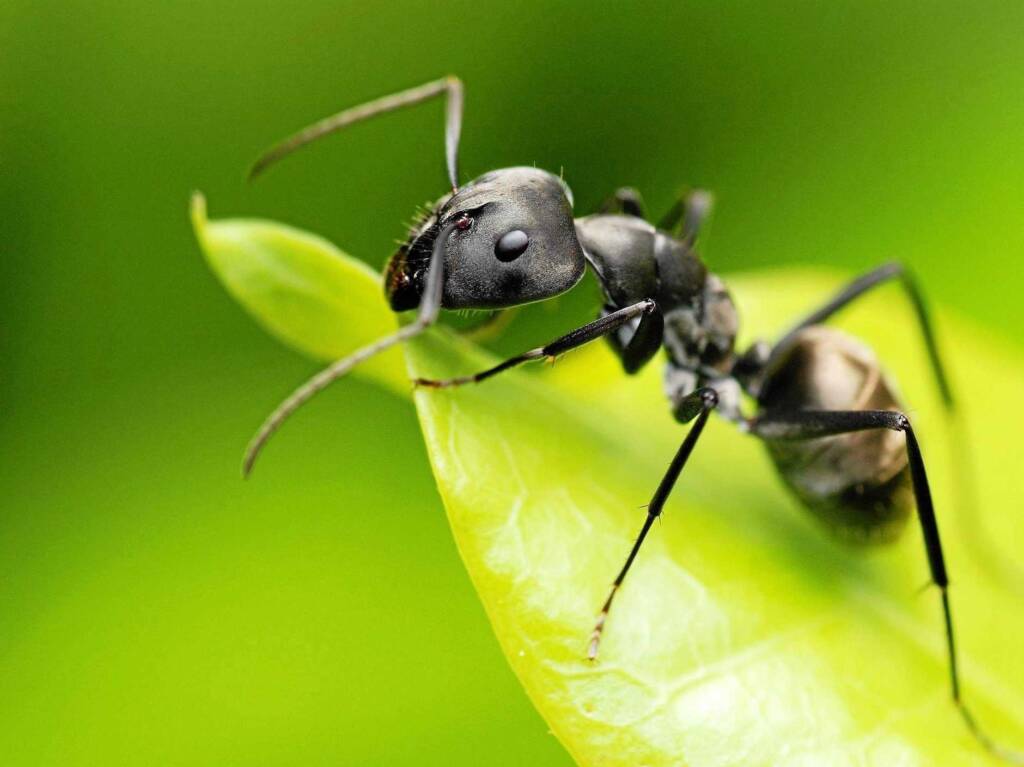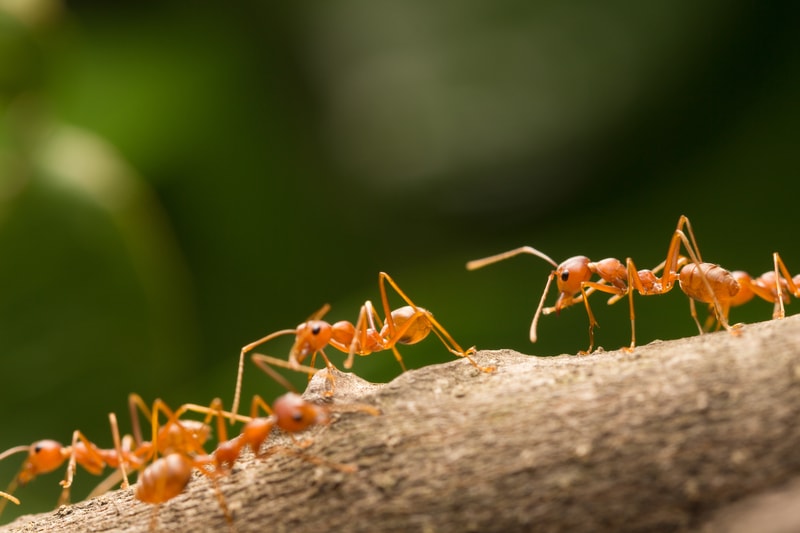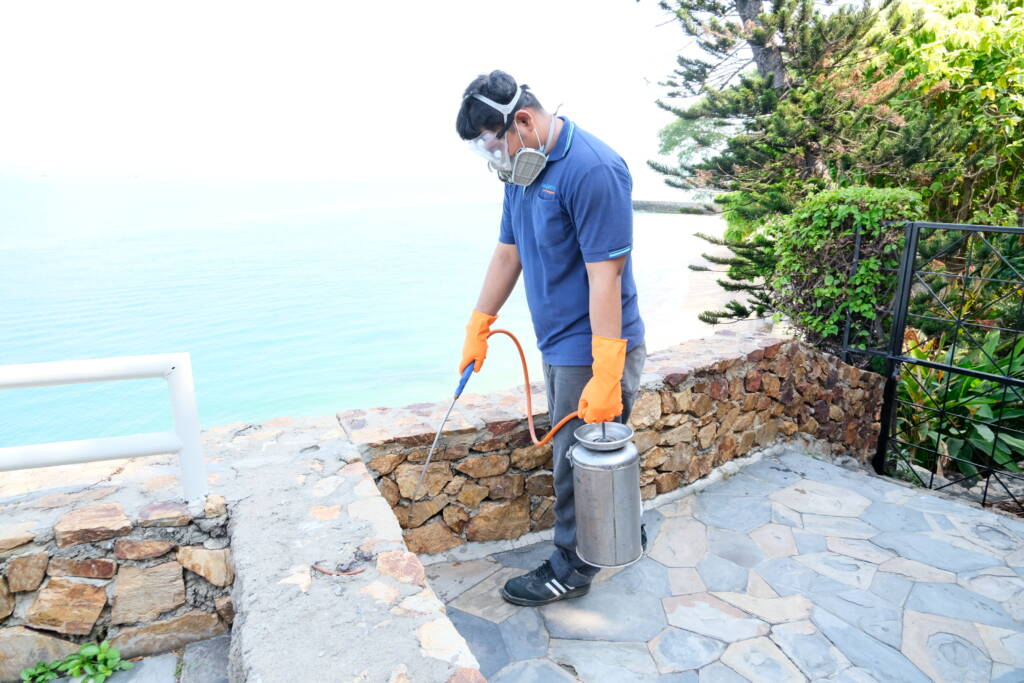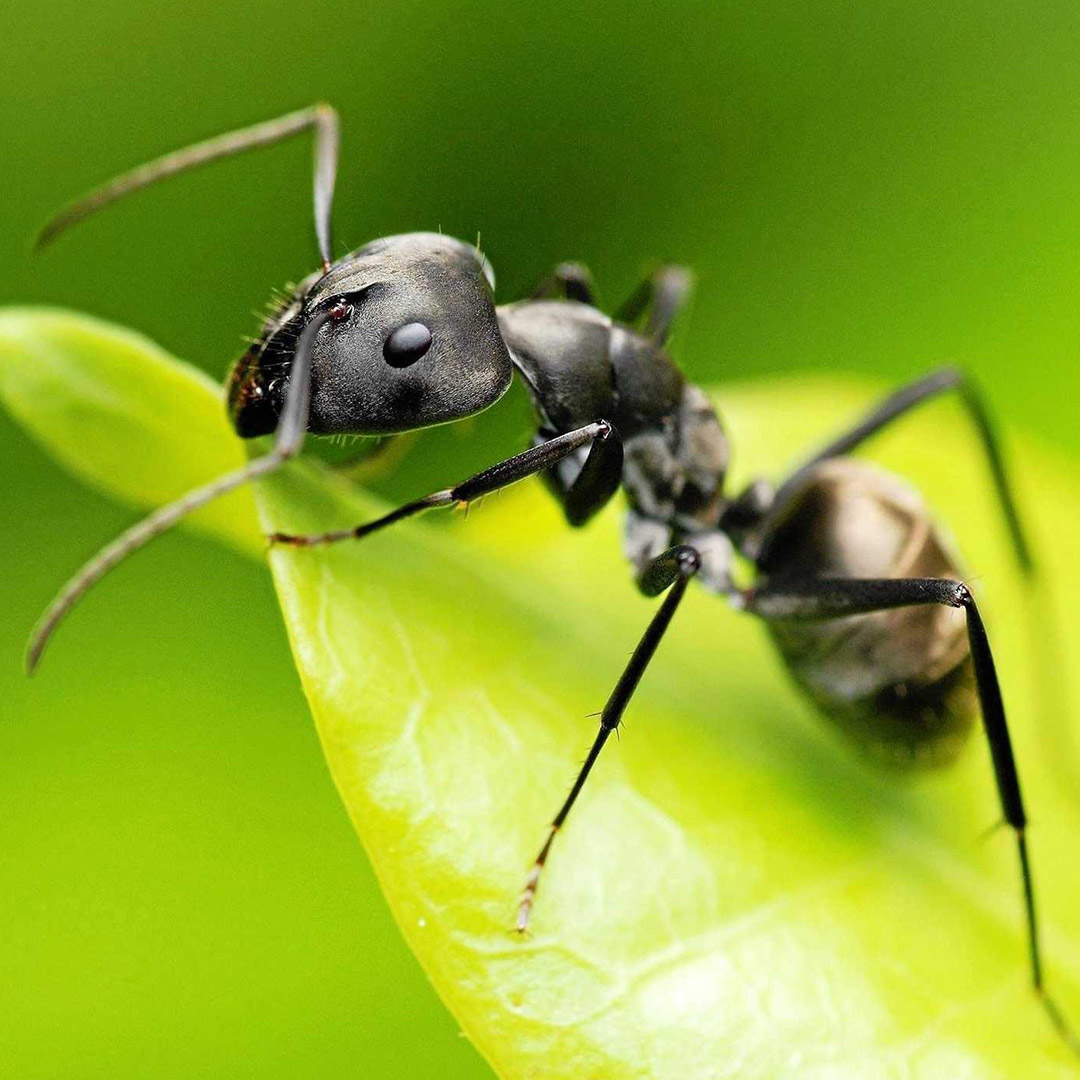Ant Control Service
Ants are pest when they live inside our premises. Ants are social insects that live in colonies. They cooperate with their nest mates to maintain a caste system of individuals that perform specific tasks. The typical ant colony consists of worker and reproductive ants. Workers are the ants people most often encounter. All workers are female. They construct the nest, gather food, tend the young, move the colony and defend it when necessary.
Several species of ants commonly live in lawns and ornamental plantings of trees and shrubs in and around our home, offices and buildings. Most common ants which are found near or inside our home, office and building are:
- PAVEMENT ANT (Tetramorium caespitum)
- ODOROUS HOUSE ANT (Tapinoma sessile)
- SMALL HONEY ANT (Prenolepis imparis)
- CARPENTER ANT (Camponotus )
- LARGER YELLOW ANT (Acanthomyops interjectus)
- PHARAOH ANT (Monomorium pharaonis)


Where to Look for Ants: Ants can be found anywhere outside or inside in any room in a structure, particularly where food or garbage is stored, prepared, or handled. Wherever moisture is available; as around plumbing fixtures, around foundations, slabs, sidewalks and porches or dispersed throughout a lawn. In wooded areas in logs, stumps, trees, fences, telephone posts and railroad ties. Entry points into houses include doorways, cracks, and spaces under siding. The expansion joint along the lower edge of sliding glass doors is a common, but often overlooked, entry point.
Problems associated with Ants
Visual annoyance, stings, destruction and pollution of food, damage to woodwork and masonry objects, holes gnawed in fabric and rubber goods, theft of seeds from flower and lawn beds, damage to domesticated plants. Some ants also act as intermediate hosts for parasites of animals and poultry and are also carriers of human and plant diseases, e.g., dysentery, streptococcus, pseudomonis and staphylococcus. Ants can contaminate food, hollow out wood, destroy textiles by feeding upon the soiled portions. There is evidence to suggest that ants may be mechanical carriers of such human diseases as small pox, cholera, dysentery, tuberculosis, staphylococcus, streptococcus, psedomonas and plague. They can also destroy plants and may bite and/or sting.
Innovative pest management way to control Ants
Innovative pest management professional will inspect all the areas before applying control measures. After inspection they will apply either less toxic ant baits or FDA approved insecticide to kill ant colony. Ant baits will be applied on the ant trails so don’t clean the ant trails until eliminated the infestation, as these trails will allow the ants to find our bait and carry it back to the nest. Once the infestation has been eradicated, then clean up the trail surfaces and keep them clean. The overall treatment will be properly documented for reference. While executing this treatment team will also educate customer on the way to keep their home/premise free from ants.
How to Get Rid of an Ant Infestation
Sanitation is critical for the prevention and control of any pest. Like all living creatures, ants need water, food, and shelter for survival. Ants leave the shelter of their colony to find food and water. Keep foods sealed, floors swept, and all surfaces cleaned prevents ant infestation at your home and offices. Also ants are tiny creatures and can enter homes and buildings through very small cracks and crevices. To minimize this, we need to seal around windows and doors and all cable, pipe, and wire entry points. Regular inspection of foundations for tiny cracks will help to prevent entry of this tiny creature from outside.

